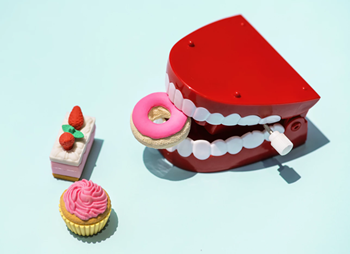For many of us, taking care of our teeth is something that starts and ends with a toothbrush. And while brushing is a great start, there is plenty we still don’t consider when it comes to good oral hygiene. But fear not, this isn’t an article just nagging you to floss (which, yes, you really should do) but arming you with the right information to keep you smiling for longer.
The basics
Let’s get the essentials covered first. Brushing twice a day – morning and night – using a fluoride toothpaste is the cornerstone of good oral hygiene. It is recommended to wait 30 minutes after eating before you brush, as any earlier will spread any acid from your food and drink into the enamel of your teeth. Brushing technique does matter – avoid brushing heavily side to side or back and forth – the best way is a soft circular motion over teeth and gum lines. Your toothpaste will work for longer if you spit rather than rinse after brushing. If you are at high risk of tooth decay, your dentist might recommend a toothpaste with a much higher fluoride content as a protective measure.
Flossing can initially be a bit fiddly to master, but floss holders can help make this process a littler easier. Ideally it should be done once a day after brushing. Move the floss gently down the sides of the teeth to the gums to remove any food particles and dislodge plaque.
Pearly whites
Society values the aesthetics of white teeth and considers it to be a sign of healthy teeth. But while the exterior of the tooth is comprised of a layer of translucent enamel, underneath that is a layer of dentine which is naturally yellow in colour and essential for strong healthy teeth.
The pearly white of the enamel layer can become yellow due to smoking, poor oral hygiene, stains from foods such as coffee, tea and red wine, or even some medications. As we age, the enamel layer itself naturally becomes thinner, exposing more of the yellow dentine layer beneath it.
So if your teeth are yellow there may be a problem, there may not be – see your dentist if you are concerned about the colour of your teeth.
 Stick to your gums
Stick to your gums
Gum disease is caused by a build-up of plaque and tartar on teeth and along the gum line, and can have a significant impact on the rest of your health. According to Geelong Dental Clinic’s Dr David Pavia, gum disease can affect your susceptibility to cardiovascular disease, decrease your ability to maintain diabetes control and increase your chance of chronic infections. He suggests regularly looking out for the following signs of gum disease: bleeding gums, red and swollen gums, receding gums, bad breath and loose teeth.
You can minimize your risk of gum disease by good brushing technique of your teeth and gum line twice a day, regular flossing, using a mouthwash, and avoiding smoking and sugary foods and drinks. Your dentist can remove any tartar buildup and recommend a good mouthwash. The earlier gum disease is identified the easier it is to combat, so keeping an eye out for the signs and having a regular checkup should help keep those gums in great shape.
The bad stuff
Sugary drinks and highly processed foods are not only bad for our general nutrition, but can also impact the health of our teeth by causing them to lose minerals and exposing them to decay.
The saliva in our mouth has an important role in keeping our teeth free of decay. Every time we consume food and drink, our teeth are coated in sugar and acid. Foods that are quite dense in calories or highly processed are often quite sticky and can therefore stay on our teeth for a long time. Saliva dilutes the sugars and neutralises the acids in the food and drink, controlling plaque and helping to remineralise the teeth.
 The good stuff
The good stuff
So if acidic and sugary foods and drinks are bad, what’s good? Unsweetened dairy products contain proteins that can repair enamel. Kids should be encouraged to finish a meal with a glass of milk or water to wash away acids and sugars. Carrots and celery are ideal in between meal snacks rather than eating sweet or acidic products.
Good foods include:
- Fresh fruit and veggies
- Dried nuts
- Sugar-free gum
- Dairy products
Sugar free gum is also recommended for helping keep teeth healthy. It stimulates the creation of saliva in our mouths which helps re-buff our teeth’s protective layer after a meal. The fluoride contained in toothpaste and our water supply also helps tooth remineralisation, and your dentist may recommend a tooth remineralising paste that can prevent the need for fillings where you have teeth in the early stages of decay.
Keep on top of it
Your dentist is an important partner in your oral health, and can tailor oral hygiene practices and products to address your individual risk for tooth decay and/or gum disease. So, keep picking up that toothbrush and remember that proper dental care doesn’t stop when you are away from the bathroom sink.



